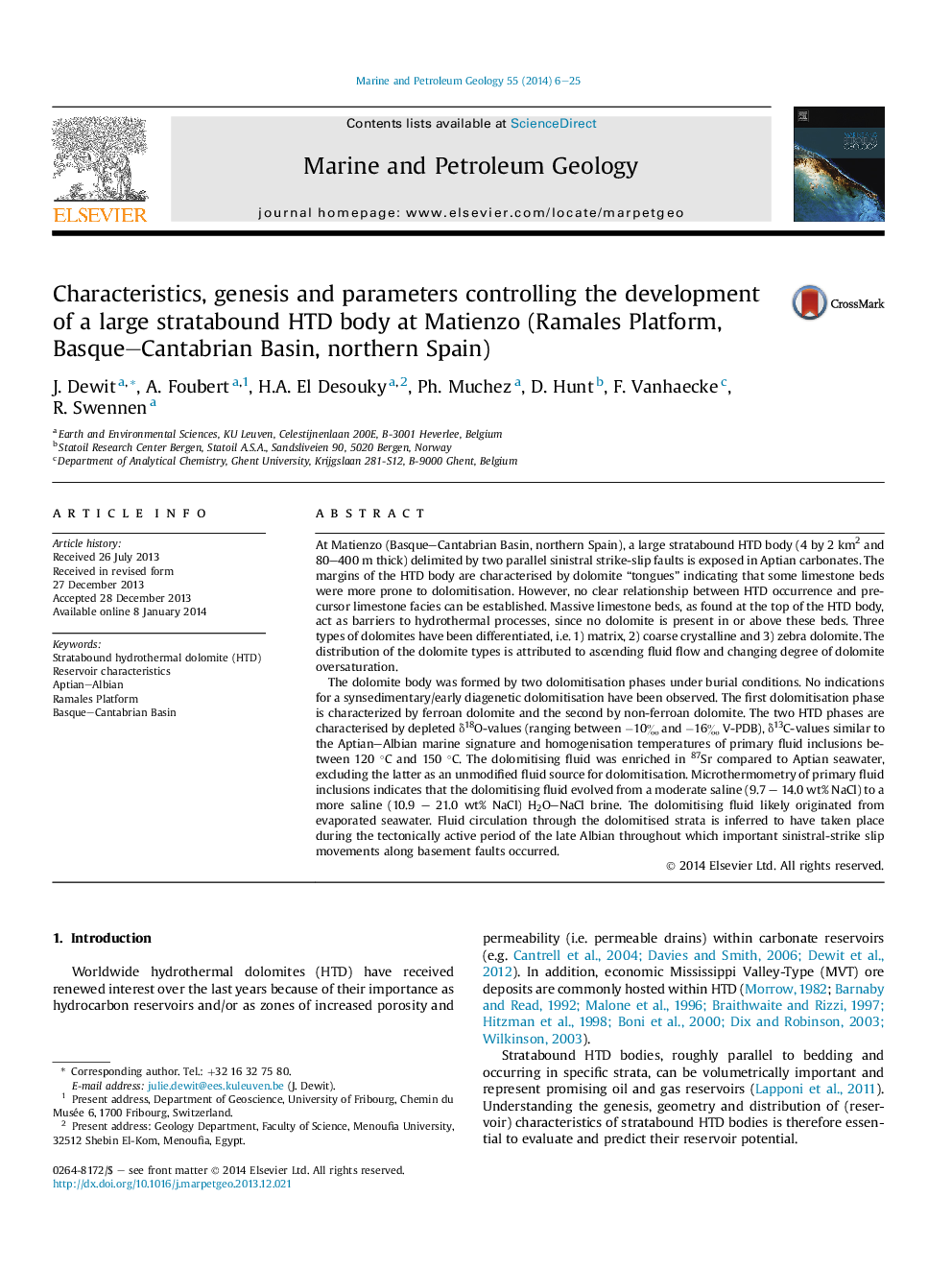| کد مقاله | کد نشریه | سال انتشار | مقاله انگلیسی | نسخه تمام متن |
|---|---|---|---|---|
| 6435421 | 1637169 | 2014 | 20 صفحه PDF | دانلود رایگان |

- Extent of HTD body is controlled by the interplay of faults and impermeable units.
- No relation between limestone fabric and dolomite occurrence is observed.
- HTD types & porosity distribution relates to changing dolomite saturation degrees.
- HTD body formed by two phases of dolomitisation (i.e. ferroan and non-ferroan).
- Geochemical data of the HTD suggest that dolomitising fluids was a residual brine.
At Matienzo (Basque-Cantabrian Basin, northern Spain), a large stratabound HTD body (4 by 2 km2 and 80-400 m thick) delimited by two parallel sinistral strike-slip faults is exposed in Aptian carbonates. The margins of the HTD body are characterised by dolomite “tongues” indicating that some limestone beds were more prone to dolomitisation. However, no clear relationship between HTD occurrence and precursor limestone facies can be established. Massive limestone beds, as found at the top of the HTD body, act as barriers to hydrothermal processes, since no dolomite is present in or above these beds. Three types of dolomites have been differentiated, i.e. 1) matrix, 2) coarse crystalline and 3) zebra dolomite. The distribution of the dolomite types is attributed to ascending fluid flow and changing degree of dolomite oversaturation.The dolomite body was formed by two dolomitisation phases under burial conditions. No indications for a synsedimentary/early diagenetic dolomitisation have been observed. The first dolomitisation phase is characterized by ferroan dolomite and the second by non-ferroan dolomite. The two HTD phases are characterised by depleted δ18O-values (ranging between â10â° and â16â° V-PDB), δ13C-values similar to the Aptian-Albian marine signature and homogenisation temperatures of primary fluid inclusions between 120 °C and 150 °C. The dolomitising fluid was enriched in 87Sr compared to Aptian seawater, excluding the latter as an unmodified fluid source for dolomitisation. Microthermometry of primary fluid inclusions indicates that the dolomitising fluid evolved from a moderate saline (9.7 - 14.0 wt% NaCl) to a more saline (10.9 - 21.0 wt% NaCl) H2O-NaCl brine. The dolomitising fluid likely originated from evaporated seawater. Fluid circulation through the dolomitised strata is inferred to have taken place during the tectonically active period of the late Albian throughout which important sinistral-strike slip movements along basement faults occurred.
Journal: Marine and Petroleum Geology - Volume 55, August 2014, Pages 6-25